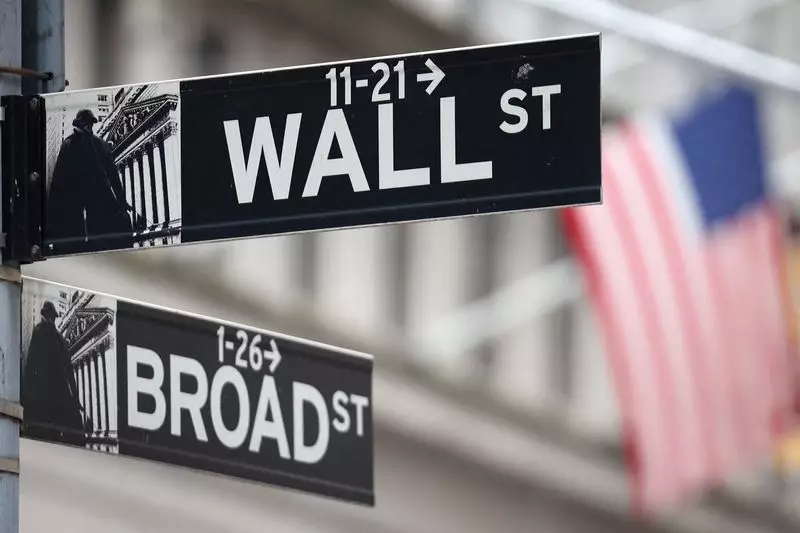In a notable twist of fate for investors, the Dow Jones Industrial Average managed to extend its winning streak, finishing slightly higher amid a landscape characterized by low trading volumes and rising Treasury yields. The index’s performance marks its fifth consecutive day of gains, a feat that provided a glimmer of optimism despite the challenges faced by the technology sector, which has been under pressure from increased borrowing costs. Meanwhile, the Nasdaq Composite and the S&P 500 both slipped into negative territory, halting their own streaks of upward momentum. This scenario underscores the dichotomy that continues to shape the markets, particularly amid the influence of major tech stocks, often referred to as the Magnificent Seven.
The situation in the tech sector is critical. The yield on the benchmark 10-year U.S. Treasury note reached a worrying high of 4.64%, the highest point observed since early May. This inflationary pressure is traditionally perceived as detrimental to growth stocks—companies that are often reliant on heavy borrowing to fuel expansion. Therefore, as investors navigate through rising yields, the allure of high-growth tech investments wanes, raising uncertainties about the sustainability of recent market highs.
The Feeding Frenzy of Market Sentiment
The volatility seen in the technology sector was further compounded by broad investor sentiment, which seemed to shift as days of easy gains turned into cautious steps backward. The S&P 500 edged down by 2.45 points, while the Nasdaq slipped by 10.77 points. In contrast, the Dow Jones experienced a marginal rise of 28.77 points. Among the tech giants, it was Tesla that took a significant hit, plunging 1.8%, while Apple showed remarkable resilience, inching up by 0.3%. This performance trajectory highlights the mixed reactions from investors, especially as Apple heads towards an unprecedented market cap of $4 trillion.
Adam Turnquist from LPL Financial articulates a pertinent point: the “Magnificent Seven” (a cohort of technology giants that includes the likes of Apple, Microsoft, and Tesla) continues to garner significant attention, especially as the market looks for strong leaders heading into the volatile year-end trading period. However, there seems to be a growing sentiment that this dependency on a select group of stocks may begin to show signs of strain unless other sectors can equally contribute to market growth.
Looking ahead, analysts predict that the ongoing reliance on the performance of the Magnificent Seven could lead to potential market stresses if these stocks falter. Despite earlier surges fueled by speculation regarding supportive interest rate policies and the potential benefits from advancements in artificial intelligence, market forces seem to be pushing back. The recent signs of cooling in stock performance signal that the market may not solely depend on the performance of the leading tech stocks for future gains, raising the necessity for broader sector involvement.
In conjunction with this, recent economic data releases painted a more positive picture of the labor market, showcasing a decline in jobless benefit applications. This suggests a resilient economy, albeit one that might be growing increasingly cautious as holiday trading norms set in. Notably, the upcoming “Santa Claus rally,” historically characterized by heightened market activity due to year-end investments, may provide temporary relief. The S&P 500 has historically benefitted from this seasonal phenomenon, recording average gains around 1.3% during the last trading days of December.
The performance of cryptocurrency-related stocks offers further insight into the current market climate. Following a significant decline in Bitcoin prices, stocks tied to digital currency have also fallen—in some cases, more than 4%. Such shifts indicate the broader impact of the crypto market on tech-heavy indices, showing how intertwined these sectors have become. As major sectors such as consumer discretionary and energy indices also posted declines, it becomes increasingly clear that a comprehensive recovery cannot rest solely on the shoulders of tech stocks, but must integrate diverse market drivers.
The interplay between rising Treasury yields and the varying performances of leading tech stocks casts a shadow on what had been a growth-driven market narrative. As investors pivot from dominant themes toward a broader economic outlook, the need for a balanced contribution from various sectors has never been more critical. The markets remain caught in a delicate dance, with the horizon bringing both opportunity and risk as the year draws to a close.

